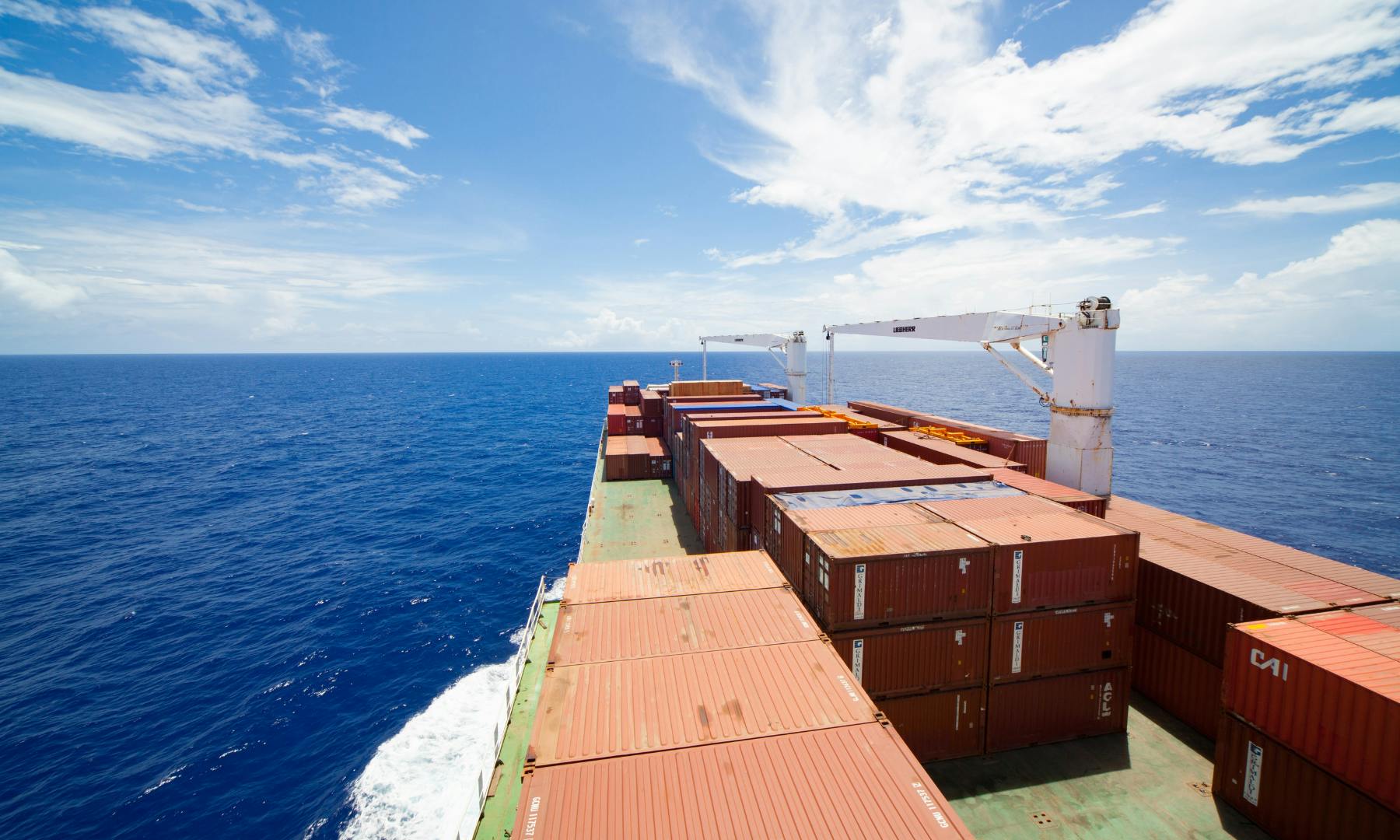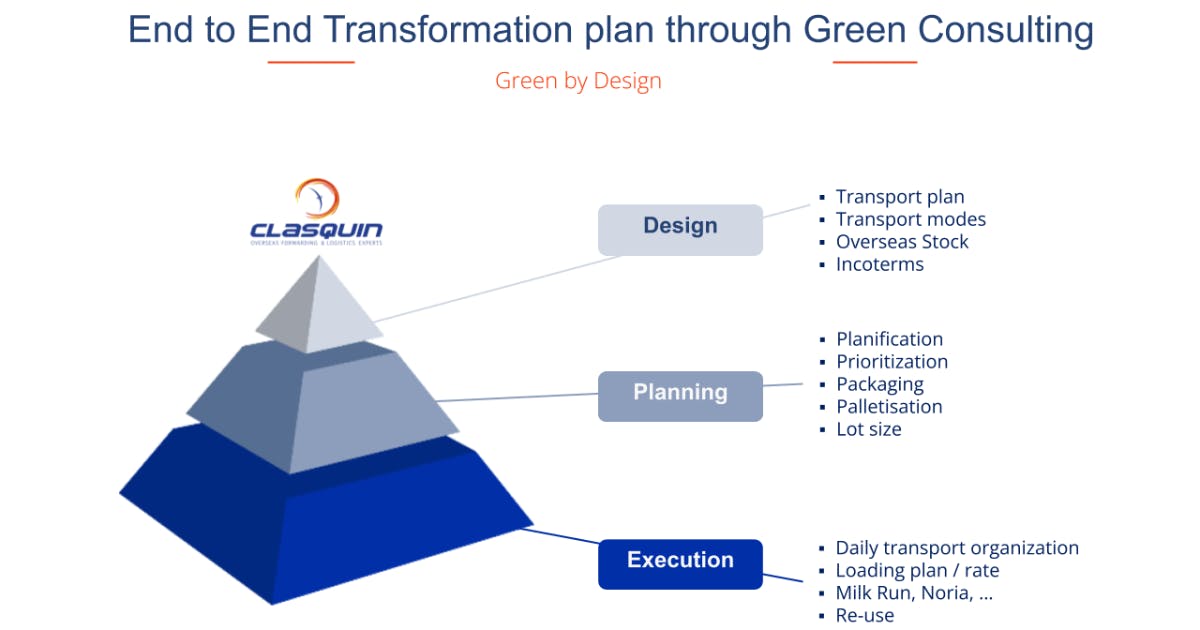Jan 14, 2026 Webinar | Global Supply Chain Architecture: Examining Red Sea’s Evolving Impact - Register Now

Insights on decarbonization of logistics – a freight-forwarder’s perspective
Finding a route to net zero emissions is the single greatest challenge facing businesses in international freight logistics. And how quickly we achieve this will have a direct impact on our future on this planet. In our latest white paper, we explored the opportunities that are available for companies that act decisively, and present a concrete action plan to help all parties within the freight supply chain to start their decarbonization journey.
As part of our research, we conducted interviews with shippers, freight-forwarders and carriers. In this article, we talked with David Canard-Volland, VP Supply Chain Management CSCP, SCOR at CLASQUIN, to gain his perspectives on the subject.
ABOUT CLASQUIN:
- Speciality: freight-forwarder, specialized in air and sea transport engineering and overseas logistics
- Composition: international mid-sized freight-forwarder
What is driving you to reduce your scope 3 emissions - and those of your clients?
At CLASQUIN, we always try to bring value to our clients. Concerns about the planet are becoming a real priority and solutions must be found. International Supply Chains are mostly outsourced, thus in the scope 3, and most of the Green House Gases emissions are located in this scope.
So, we’re trying to anticipate the market and help our clients reduce these emissions, giving them the solution to something that they can’t master themselves. At CLASQUIN, decarbonization is self-fueled.
Where do you start with your clients to help them reduce their scope 3 emissions?
To start this process, we tell our clients “Kindly forget everything you know about classic supply chains performance - let’s forget about cost, inventory levels, cash, lead time. Let’s brainstorm & focus on green first.”
We start with this shock, then get into a brainstorming with our clients. Having thought “green first”, we can then come back to the common performance indicators of the supply chain, such as price, lead time and cash – because these are all still applicable – and we put each initiative through a filter to select the ones that are the best for them.
But what we explain is that there will be some tradeoff and arbitration - you cannot win on green and also win on every other indicator. Some will be decreased, some will be equal. The results are totally different in each case and for each client.
Why is it important for scope 3 emissions to be calculated using accurate data?
It is more valuable to be able to capture the actual carbon footprint of each freight transaction, and for each transport leg, rather than getting a yearly estimated figure that no-one can understand as it is far too large and inaccurate to do anything concrete with. Seeing the carbon cost of each transport leg allows you to see the direct cause and effect of any changes that you make to your logistics operations.
One of our clients, a major French luxury brand in the fashion industry, wanted to be able to calculate the carbon footprint of their logistics operations. Thanks to Wakeo’s data, we are able to provide them with these figures, and we can get them information based on the actual vehicles used, segment by segment. Our client is very satisfied with how precise this CO2 emissions data is, because it gives them the power to act decisively on decarbonization.
When you talk to auditors, they say that the carbon footprints that most firms are producing annually are not anywhere near as accurate as accounting. We are trying to push for more accurate figures.
From a compliance perspective, in France, the GHG reporting legislation is expanding so that qualifying organizations will be required from 2023 to start communicating on their scope 3 data, based on their 2022 data. Our clients will be able to answer this request thanks to our transaction-based carbon calculator, part of our Live BY CLASQUIN offer, which is enriched with Wakeo’s real-time data.
How do you support your clients to initiate decarbonization strategies?
Beyond providing our clients with access to this accurate carbon footprint data, we recommend a number of strategies in the field of organization and practices. As a freight-forwarder, it is in the realm of organization and practices that CLASQUIN can have the greatest influence, and it is also here where the fastest improvements and efficiencies can be found.
Changes can be made at all three stages of the supply chain strategy pyramid, from design, through to planning and then execution.

We start by looking at the ‘quick wins’ that are low in complexity and offer high returns. For example, it could be a modal shift where you change from truck to river for the last 200 km. These strategies don’t require management sponsorship, or a dedicated team to manage the change. Instead, you can alter one transaction and run it for a week or a month, then look at the data and decide to continue with it, or reset as necessary.
We define quick wins as being:
- Limited inexpensive changes
- Quick implementation and easy step back
- High impacts (80/20 and high ROI)
We then look at the next set of 40 - 50 initiatives that require people to change their mindset, so that they are thinking “green first”. These initiatives will require a transformation plan and some level of supply chain reconfiguration, and there will likely be some trade offs to make.
Can you give us some concrete examples of how you help your clients reduce their scope 3 emissions?
For example, a change in Incoterms can significantly reduce empty mileage. If your supplier organizes transportation, there's no chance it would consolidate transport with other suppliers. But if you reverse the Incoterm and orchestrate shipments yourself, you have control of container optimization. You can select greener transport or optimize container loads, using a consolidation warehouse. This is an example where a term on the sales / legal side can have a strong influence on decarbonization.
In another case study of what we did with one of our clients, they had a 15-tonne truck-sized cargo to move from China to France. We used our carbon calculator to compare the carbon footprint of four available transport modes.
Changzhou to Angouleme by:
- Sea - 3 tons CO2e
- Rail - 10 tons CO2e
- Road - 20 tons CO2e
- Air - 140 tons CO2e
Our transaction-based carbon calculator, powered by Wakeo’s data, was able to firstly help them understand the impacts of their decisions in terms of carbon footprint. Switching from air to sea would reduce their carbon footprint by around 50 times.
Then we helped them consider how they could reduce the need for air freight with the same supply chain by sharing priorities, using consolidation warehouses, or piling up inventory. All these options could be discussed because we understood the precise impact of our decisions.
Another initiative is to densify containers, so that our clients are reducing empty mileage. This can result in huge transportation cost savings, as well as significantly reducing the CO2/ton-km impact. For example, with a client moving 20 containers of goods from China to France, we could show him with our carbon calculator that he could reduce their CO2e impact by 13% by densifying the cargo so that they only needed 15 containers - while saving thousands in transport costs.
We explain to our clients how this can be done. If they are using non stackable pallets then they are moving a lot of air. Stackable pallets improve the situation by removing a part of the empty, and then if they bulk-fill the containers, they can further optimize the cargo load. You can go from using only 43% of the total container volume with non-stackable pallets, to using 78% of the available volume by bulk-filling – that’s an 81% increase in efficiency.
You will have to spend more on labor for loading and unloading a bulk container rather than using pallets, but the savings on shipping fewer containers will more than compensate, and the CO2 savings are considerable. All of these costs and savings need to be put into figures, so that we can fully understand the impacts of our decisions.
Wakeo and CLASQUIN are engaged in an ambitious long-term partnership built around a shared vision: investing in technology to be one step ahead of the market standard and offer optimum responsiveness to clients, through new high-value-added services.
With Wakeo's enriched data on carbon footprint, CLASQUIN helps its clients accurately measure their scope 3 emissions, quantify the exact savings of their initiatives, and decarbonize confidently.
